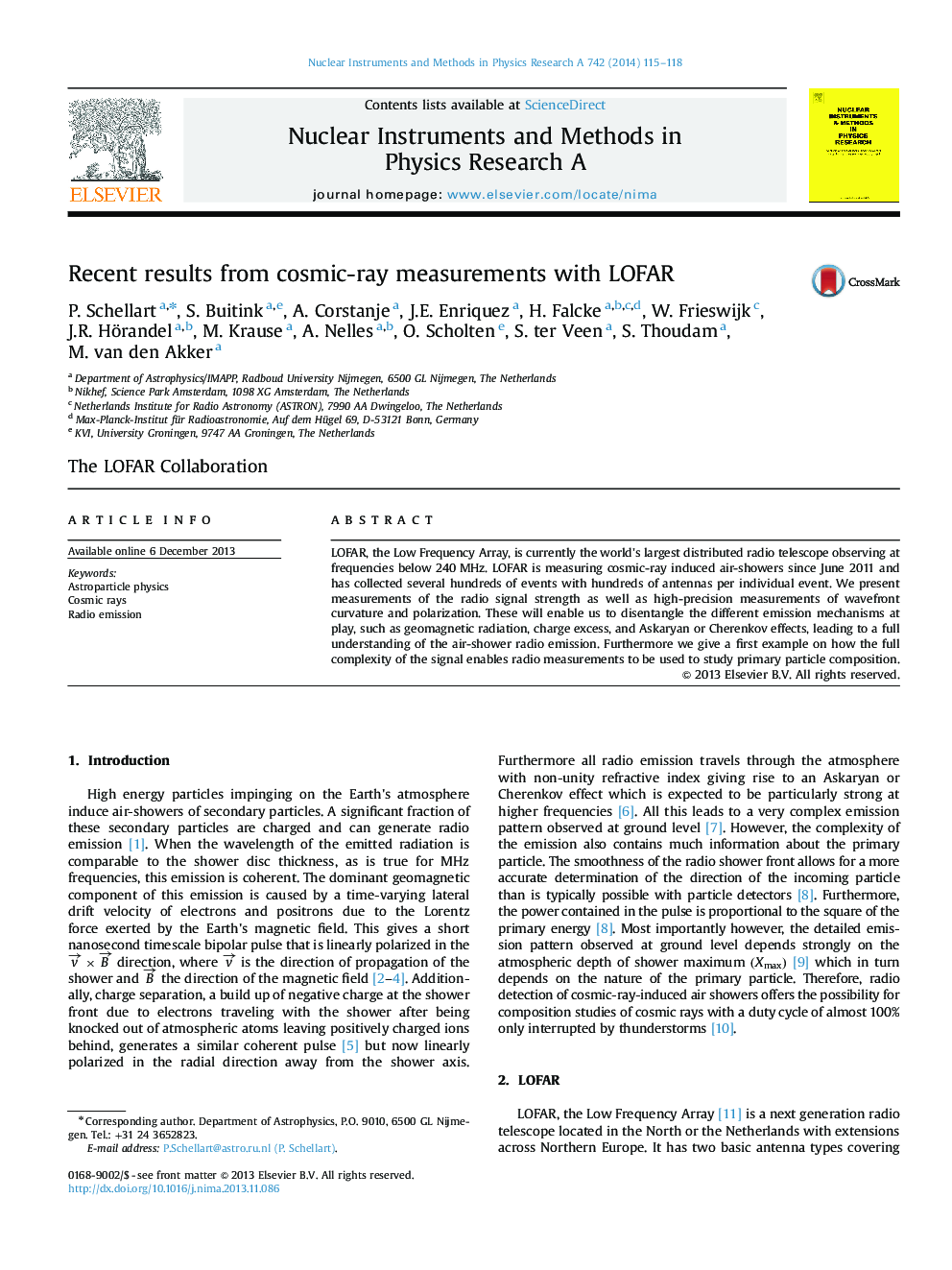| Article ID | Journal | Published Year | Pages | File Type |
|---|---|---|---|---|
| 8176940 | Nuclear Instruments and Methods in Physics Research Section A: Accelerators, Spectrometers, Detectors and Associated Equipment | 2014 | 4 Pages |
Abstract
LOFAR, the Low Frequency Array, is currently the world's largest distributed radio telescope observing at frequencies below 240Â MHz. LOFAR is measuring cosmic-ray induced air-showers since June 2011 and has collected several hundreds of events with hundreds of antennas per individual event. We present measurements of the radio signal strength as well as high-precision measurements of wavefront curvature and polarization. These will enable us to disentangle the different emission mechanisms at play, such as geomagnetic radiation, charge excess, and Askaryan or Cherenkov effects, leading to a full understanding of the air-shower radio emission. Furthermore we give a first example on how the full complexity of the signal enables radio measurements to be used to study primary particle composition.
Related Topics
Physical Sciences and Engineering
Physics and Astronomy
Instrumentation
Authors
P. Schellart, S. Buitink, A. Corstanje, J.E. Enriquez, H. Falcke, W. Frieswijk, J.R. Hörandel, M. Krause, A. Nelles, O. Scholten, S. ter Veen, S. Thoudam, M. van den Akker, The LOFAR Collaboration The LOFAR Collaboration,
